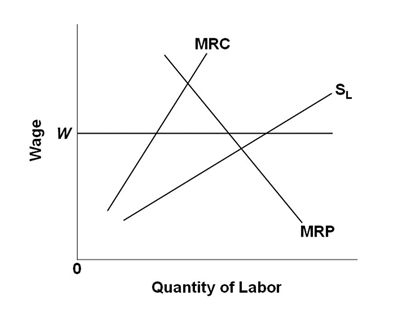Athos, Porthos,and Aramis each like to take fencing lessons. The price of a fencing lesson is $10 . Athos values a fencing lesson at $15, Porthos at $13, and Aramis at $11 . Suppose that if the government taxes fencing lessons at 50 cents each, the price rises to $10.50 . A consequence of the tax is that consumer surplus shrinks by
a. $1.50 and tax revenues increase by $1.50, so there is no deadweight loss.
b. $9.00 and tax revenues increase by $1.50, so there is a deadweight loss of $7.50.
c. $7.50 and tax revenues increase by $7.50, so there is no deadweight loss.
d. $7.50 and tax revenues increase by $1.50, so there is a deadweight loss of $6.
a
You might also like to view...
Increasing opportunity cost exists
A) only in theory but not in real life. B) in the real world. C) for a country but not for an individual. D) as long as there is high unemployment. E) inside the PPF but not on the PPF.
The tit-for-tat strategy implies that the firms
a. in non-competitive industries match price increases but ignore price decreases b. will follow the lead of the dominant firm in making pricing decisions c. prices will change whenever fixed cost changes d. cooperate on the first round, and then follow your competitors reactions on the second round e. price will only change if demand changes
Assume that a firm's marginal revenue curve intersects the rising portion of the marginal cost curve at 100 units of output. At this output level, a profit-maximizing firm's total cost is $1,000 . If the price of the product is $10 per unit, the firm will earn an economic profit of:
a. zero. b. $400. c. more than zero but less than $100. d. $100. e. more than $100.
If a minimum wage is set at W, what will happen to employment in the monopsonistic labor market shown in the diagram above?

A. Employment will decrease
B. Employment will increase
C. Employment will stay the same
D. Employment may increase but usually it tends to stay the same